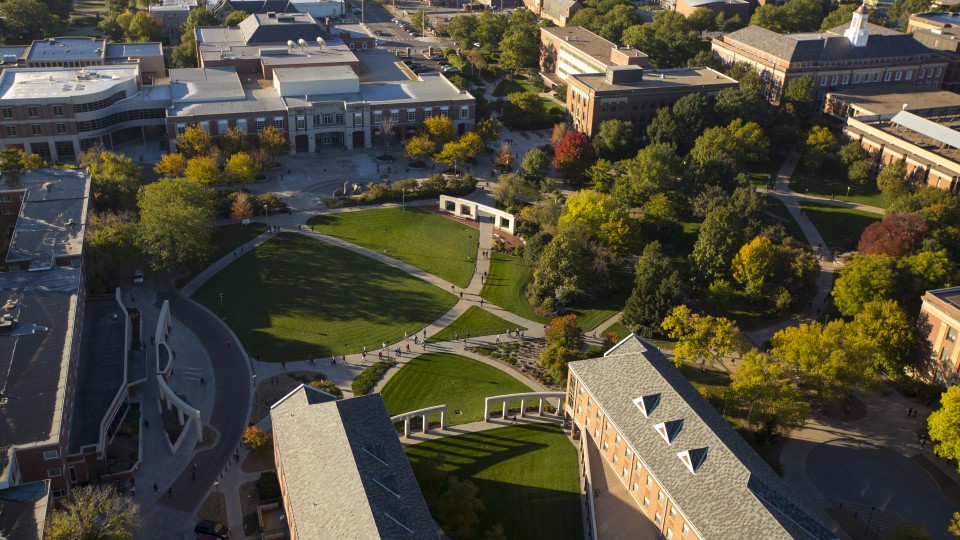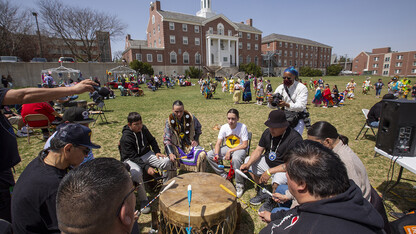· 4 min read
University partners with firm on diversity analysis

The University of Nebraska-Lincoln is conducting a campuswide diversity analysis with assistance from Halualani and Associates, a leading national research firm that specializes in diversity and higher education.
The analysis, which is part of the university’s continuous efforts to enhance diversity and inclusion, will be completed in two phases — a benchmarking that compares Nebraska’s diversity programs and procedures to those of five peer institutions followed by a complete review of existing campus resources. Both reports will include recommendations to guide future decisions on improving diversity and inclusion on campus.
Results of the benchmarking against peer universities were recently delivered and are available online. Halualani will begin the review of campus resources in November.
“As we move forward with goals to become a bigger and bolder university, we need to be an ever more diverse and inclusive community,” Chancellor Ronnie Green said. “I am pleased to have nationally leading Halualani and Associates on board to help us map diversity and inclusion of our University.
“We know from our own analyses that there are some great things occurring to strengthen diversity and inclusion on campus. However, there is significant work to be done if we are going to continue to move forward in these critically important areas,” Green said.
In the benchmarking phase, Nebraska’s status in five areas were compared with four Big Ten peer institutions — University of Iowa, Indiana University, Michigan State University and University of Michigan — as well as the University of Kansas. The five diversity areas in the benchmarking phase are: strategic planning; infrastructure (division, office and accompanying organizational structure); general education curriculum; faculty and staff recruitment and retention; and professional development.
“This benchmarking is an important first step and allows us to establish how we compare with peer institutions on key aspects of diversity and inclusion. It provides a foundation for a broader campus dialogue about how we can move forward in substantive and sustainable ways,” said Lance C. Pérez, interim dean of the College of Engineering and chair of the university’s diversity council.
Some initial findings made by Halaulani and Associates during the benchmarking phase include:
Nebraska is second overall among the peer institutions in diversity related faculty recruitment and retention.
There are significant opportunities to grow in staff diversity recruitment.
The university is solid among peers in diversity general education, but has an opportunity to develop a program that focuses on domestic diversity.
There are significant opportunities for Nebraska to develop diversity-related infrastructure and establish a strategic diversity plan.
Representatives of Halualani and Associates will present the complete benchmarking results to campus and describe the upcoming diversity-mapping phase in a Nov. 21 forum. More information on the public forum will be announced.
Both phases of the diversity analysis are part of a larger, ongoing initiative to more comprehensively understand diversity and inclusion at the university. The diversity council is currently leading these efforts.
“We understand that much has been done on campus to improve diversity and inclusion, from grassroots efforts to institutional programs, but there is still a great deal of work ahead of us,” Pérez said. “Our work with Halualani and Associates is structure to create a comprehensive, deliberate and sustainable strategy to enhance diversity and inclusion at Nebraska.”
The university’s decision to pursue a long-term plan for systematic change rather than enact short-term strategies in reaction to campus events grew from feedback gathered from members of the university community and focus groups. That decision led to the Office of Academic Affairs commissioning a study about best practices in academic enterprise for diversity and inclusion. Survey results led to the university seeking Halualani and Associates for deeper analysis and planning.
Based out of Redwood City, California, the research firm is highly sought by institutions of higher education to assist with diversity mapping, benchmarking, strategic and master planning, and training. It has worked with other Big Ten institutions including Michigan, Indiana and Penn State University.
For more information about diversity at Nebraska, including details on recent programs and projects, click here.







